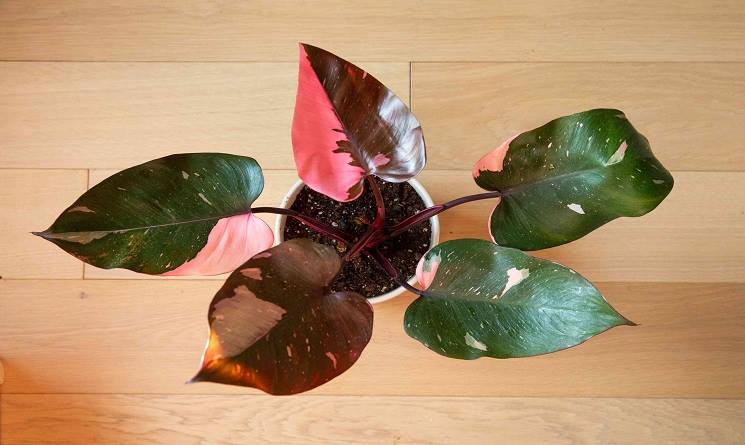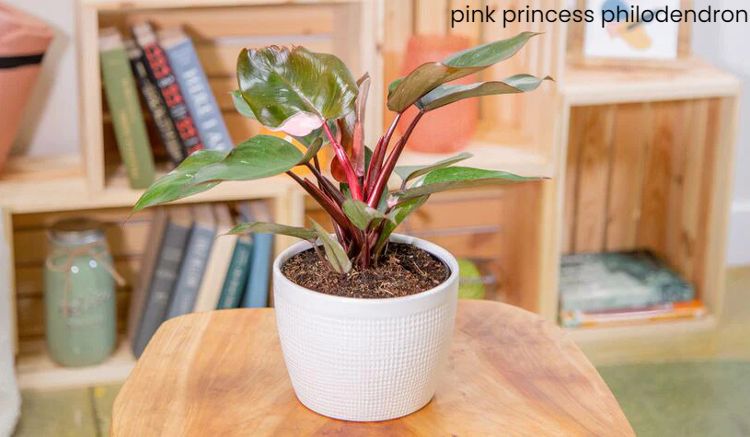The most beautiful and mesmerizing pink princess philodendron is on the top of many flower and plant lovers’ wishlists. With its heart-like, richly colored leaves variegated with bubblegum pink, the pink princess is a truly unique plant in the world of plants.
Though it is easily mistaken for the Philodendron pink congo, the pink princess variegation is stable because it results from natural processes, while the pink congo variegation is artificially created by injecting chemicals into the leaves, which typically causes them to return to green a few months after purchase.
However, growing and taking care of a pink princess philodendron is not everyone’s cup of tea. It is easy but complex to grow, therefore in this blog, we are going to educate you with some tips and tricks that can help you to grow and take care of a pink princess philodendron.
#Tips & Tricks for Pink Princess Philodendron Care
Originating from Columbia this beauty is a typical aroid in the Araceae family. Besides its high price, this plant just needs to be cared for like any other plant with a lot of love and dedication. However, talking about pink princess philodendron care here are a few tips and tricks that everybody must remember. The Persian Buttercup is a beautiful flowering plant that has been cultivated for centuries.
#Light
Getting enough light for your philodendron pink princess is the single biggest element affecting how much variegation it gets. Pick a spot that gets bright, indirect light for several hours. The philodendron pink princess can withstand a few hours of direct light when cultivated indoors, which may aid in increasing its variabilities.
Purchasing a grow lamp for a plant like this is advised if you don’t have a spot in your house that gets adequate light. The pink princess’s leaves will soon start turning back to green in the absence of sufficient light, and they will also lose their gorgeous variegation.
#Soil
Being an aroid the pink princess philodendron loves airy, organic, and well-draining soil. A good combination of one part with standard potting soil, another with perlite, and one part of orchid part is the perfect mixture for the pink princess.
#Water
Watering the plants is the most critical of growing and taking philodendron pink princess care of not just a pink princess but other plants as well. In the case of the pink princess philodendron, one must allow the top part of the soil to dry between watering and then watering well. This says that one must water their plants once a week in spring and summer and once in 1 or 2 weeks in fall and winter.
Because they are prone to root rot, make sure that Pink Princess never gets planted in soggy soil. If you are not sure if your pink princess philodendron requires water, lean on the side of caution and wait for another day. In general, it is far easier to overwater than to underwater.
#Fertilizers
During the spring and summer which is its peak growing season the pink princess gains advantages from regular monthly feedings with a maintained liquid fertilizer. Therefore, do not add fertilizers to the plants in early fall as they enter the dormant period.
#How to Plant and Grow Pink Princess Philodendron?

Similar to other philodendrons, stem cuttings are a useful method of propagating the pink princess. Propagation produces larger plants and can encourage variegation, particularly if your plant’s leaves are beginning to turn back. Furthermore, growing a fresh plant to gift to a friend is always a nice idea.
Stem cuttings are an easy way to multiply your pink princess philodendron in a few short steps.
- Choose the spot where the plant’s stem will be cut first. Two to three leaves and two to three visible stems at the base of your cutting should be present. Next, cut the stem and divide the cuttings with sharp, sterilized pruning shears or scissors.
- Take off the leaves at the bottom of your slice, leaving only two or three leaves at the top. The abbreviated edge needs to be callous over, so put it away for 12 to 24 hours.
- When the slice edge is calloused, place it in water and put it near with bright, circular light. Make sure that the exposed slice bumps are always submerged in water.
- In about two to three weeks, you should see new roots coming out of the slice. The slice can be seeded in the soil once the roots reach a minimal length of 1 inch. Make sure to use replanting soil that drains well, and water completely.
#Main Pests and Plant Diseases for Philodendron Pink Princess
In this section, you will know information regarding common pests and diseases that every planter must know for philodendron pink princess care. Your pink.princess philodendron will only be harmed by a couple of diseases and pests.
You should look out for aphids, mealybugs, fungus gnats, spider mites, and scales that are capable of invading the leaves. Making your own insecticide soap or simply removing the affected leaves may be enough to control these pests on an organic basis.
Common diseases that can affect this beautiful plant are root rot caused by over-watering and rusty spots due to fungal infection. You must look out for one thing which is wilting leaves. These come into the picture when the conditions are not appropriate.
FAQ
What is Philodendron Pink Princess?
This beauty originates in Columbia and is a common aroid of the Araceae family. The pink princess is a truly unique plant in the world of plants, with its heartlike, brilliantly colored leaves that look like bubblegum pink.
What are the main three aspects of philodendron pink princess care?
Light, Soil, and Water are the main 3 aspects of philodendron pink princess care.
How many times one must water the Philodendron Pink Princess plants?
Under the rules, plants must be watered at least once a week during Spring and Summer as well as for one or two weeks in Fall and Winter.

